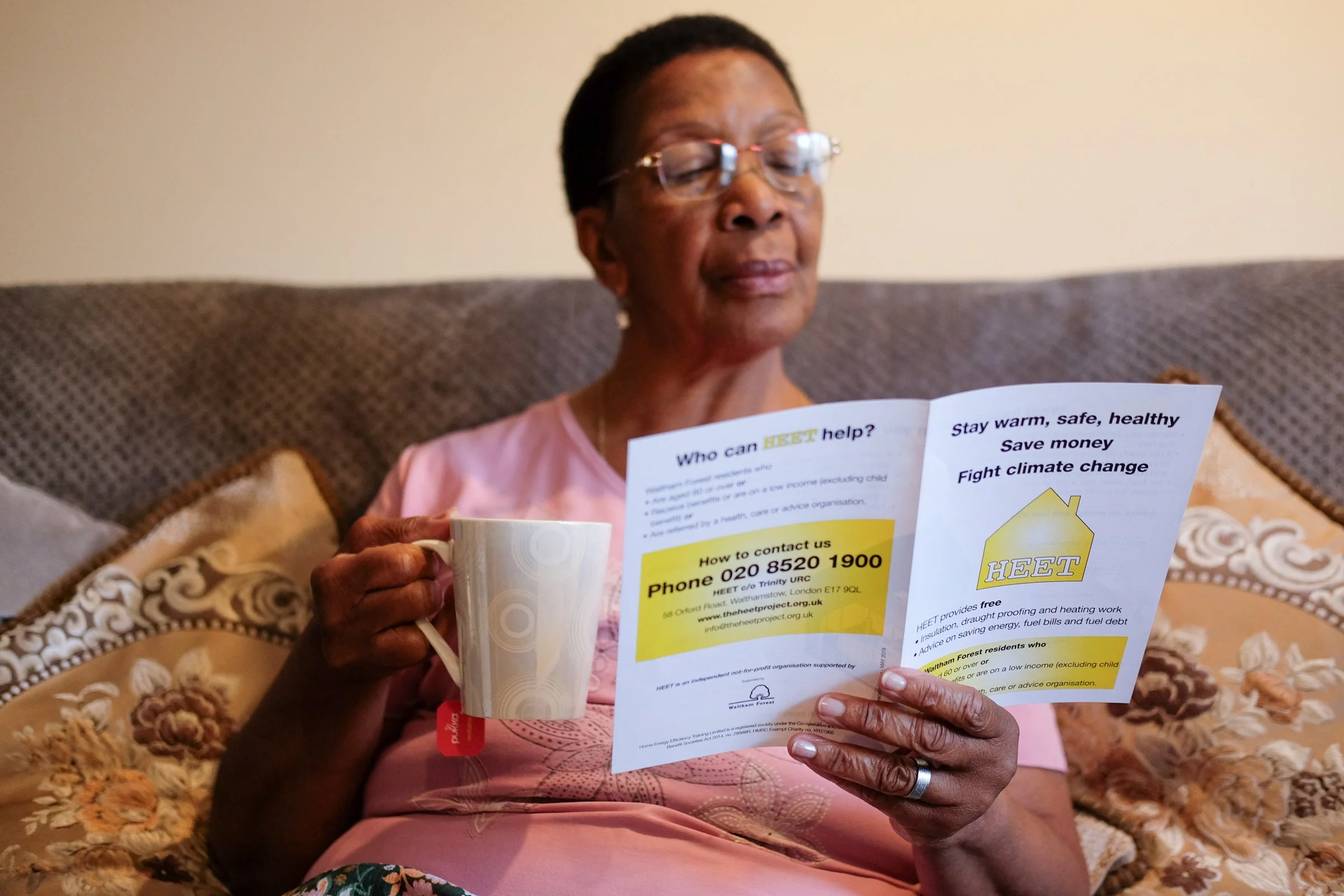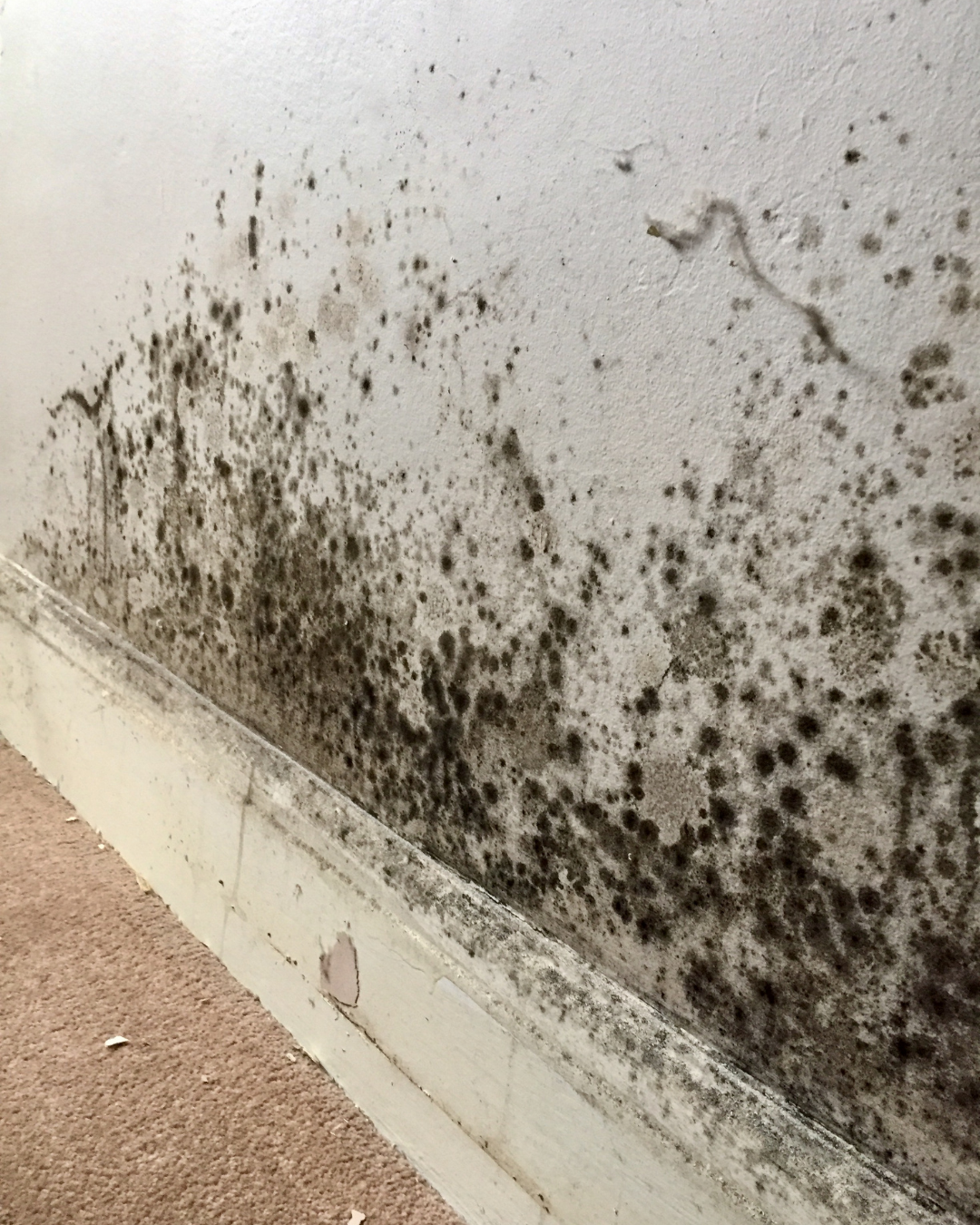Why it matters to keep warm at home
In Britain, 40,000 more people die in winter than in summer - such an increase in the death rate does not happen in other European countries where the winters are much colder. For example, UK rates are nearly twice those of the Netherlands where building standards and benefits levels are higher. This suggests that indoor temperatures play a significant part in these extra winter deaths.
Illnesses linked to cold and damp housing
Circulatory diseases. About half of all extra deaths in winter are due to coronary heart disease or stroke. Blood thickens when it is cold, which makes circulation more difficult. Emerging from a cold dwelling into the cold outdoors produces greater cardiovascular strain than from a warm dwelling. It is therefore important to wrap up warm and be physically active when leaving the home.
Moving from a very warm room to a cold room within the house also increases cold stress. Central heating, for the whole house, is the best way of combating this problem.
Respiratory illnesses. About a third of all extra winter deaths are due to respiratory illnesses such as influenza, pneumonia and bronchitis. Persistent exposure to the cold reduces resistance to chest infections. Poor home insulation, heating and ventilation can lead to condensation which in turn promotes the growth of fungi, the spores of which are known to exacerbate respiratory conditions. A humid environment, where there is damp and warmth, provide the ideal conditions for dust mites to breed. Dust mite droppings are known to trigger asthma. Tackling housing-related respiratory illnesses therefore requires a combination of heating, insulation and ventilation improvements.
Falls. There is an increased risk of injury from falls in winter. Muscles react more slowly when it is cold, making falls more likely. With older people, complications of a limb fracture, and the effects of prolonged immobility during recovery, are particularly marked. Every day eight people over the age of 65 die from a fall.
Arthritis. Arthritis symptoms, particularly pain, are worse for sufferers who live in cold, damp homes.
Depression. Living in poor quality housing can cause emotional distress. A London-based study showed that people living in cold housing had more than four times as many stress and depression episodes as those who were well housed (Ambrose P., I mustn't laugh too much, 1999).
Educational achievement. Cold housing has also been linked to poor educational achievement. Finding a quiet place to do homework is difficult in a home with limited heating. A child who is frequently ill because of cold and damp housing is also likely to miss days at school.
"Multiple housing deprivation appears to pose a health risk that is of the same magnitude as smoking and, on average, greater than that posed by excessive alcohol consumption." BMA, Housing & Health, 2003.
How to Stay Warm
Resources, information and links to help you keep your home cosy, dry and affordable to run.
Condensation & Mould
What is Condensation?
There is always some moisture in the air, even if you cannot see it. Activities such as cooking, washing, drying clothes and even breathing create additional moisture in the home. This moisture builds up in the house if it cannot escape and condenses, forming water droplets when it comes into contact with a cold surface such as an external wall, mirror, wall tile or window. Condensation that does not dry out can cause mould to form on walls or window frames. Mould spores in the home can cause respiratory health problems as well as resulting in structural damage to your home. Wallpaper and paint may peel as water gets underneath and mildew may form on clothes or furniture.
Is it Condensation?
Condensation is not the only cause of damp. It can also come from:
Leaking pipes, wastes or overflows
Rain seeping through the roof where a tile or slate is missing, spilling from a blocked gutter, penetrating around window frames, or leaking through a cracked pipe
Rising damp due to a defective damp-course or because there is no damp-course
These causes of damp often leave a 'tidemark' (see image on left)
If your home is newly built it may be damp because the water used during its construction (for example, in plaster) is still drying out.
If your home is damp for any of these reasons it may take weeks of heating and ventilation to dry out. Hiring a dehumidifier will help.
If you do not think the damp comes from any of these causes, then it is probably condensation.
How to avoid condensation
These three steps will help you reduce the condensation in your home.
1. Produce less moisture
Some ordinary daily activities produce a lot of moisture very quickly.
Cover pans and do not leave kettles boiling.
Avoid using paraffin and portable flueless bottled gas heaters as these heaters put a lot of moisture into the air.
Dry washing outdoors on a line, or put it in the bathroom with the door closed and the window open or fan on.
Vent any tumble dryer on the outside, unless it is the self-condensing type. DIY kits are available for this.
Source of Moisture
4 persons asleep for 8 hours
2 persons active for 16 hours
Cooking
Bathing, washing up etc.
Washing clothes
Drying clothes
Moisture emissions per 24 hours
1 - 2 litres (1.8 - 3.5 pints)
1.5 - 3 litres (2.6 - 5.3 pints)
2 - 4 litres (3.5 - 7 pints)
0.5 - 1 litres (0.9 - 1.8 pints)
0.5 - 1 litres (0.9 - 1.8 pints)
3 - 7.5 litres (5.3 - 13.2 pints)
2. Ventilate to remove moisture
You can ventilate your home without making draughts.
Keep a small window ajar or a trickle ventilator open when someone is in the room.
Ventilate kitchens and bathrooms when in use by opening the windows wider. Or, better still, use a humidistat-controlled electric fan. These come on automatically when the air becomes humid, and are cheap to run.
Close the kitchen and bathroom doors when these rooms are in use, even if your kitchen or bathroom has an extractor fan. A door closer is advisable, as this will help prevent moisture reaching other rooms, especially bedrooms, which are often colder and more likely to get condensation.
Ventilate cupboards and wardrobes. Avoid putting too many things in them as this stops the air circulating. Cut a ventilation slot in the back of each shelf or use slatted shelves. Cut 'breather' holes in doors and in the back of wardrobes and leave space between the back of the wardrobe and the wall. Where possible, position wardrobes and furniture against internal walls.
If you replace your window units at any time, make sure that the new frames incorporate trickle ventilators.
3. Insulate, draught proof and heat your home
Insulation and draught-proofing will help keep your home warm and will also cut fuel bills. When the whole home is warmer, condensation is less likely.
Insulate your loft. Remember to draught-proof the loft hatch but do not block the opening under the eaves.
Consider cavity wall insulation.
Consider secondary and double glazing of windows to reduce heat loss and draughts but you must ensure that there is some ventilation.
In cold weather, keep low background heating on all day, even when there is no one at home.
Some words of warning
Do not block permanent ventilators.
Do not completely block chimneys. Instead, leave a hole about two bricks in size and fit a louvered grille over it. Do not draught-proof rooms where there is condensation or mould.
Do not draught-proof a room where there is a cooker or a fuel burning heater, for example, a gas fire.
Do not draught-proof windows in the bathroom and kitchen.
First steps against mould
First treat any mould you may already have in your home. If you then deal with the basic problem of condensation, mould should not reappear.
To kill and remove mould, wipe down walls and window frames with a fungicidal wash which carries a Health and Safety Executive 'approval number'. Follow the manufacturers instructions precisely. Dry-clean mildewed clothes and shampoo carpets. Disturbing mould by brushing or vacuum cleaning can increase the risk of respiratory problems.
After treatment, redecorate using a good quality fungicidal paint to help prevent mould recurring. Note that this paint is not effective if overlaid with ordinary paints or wallpaper.






